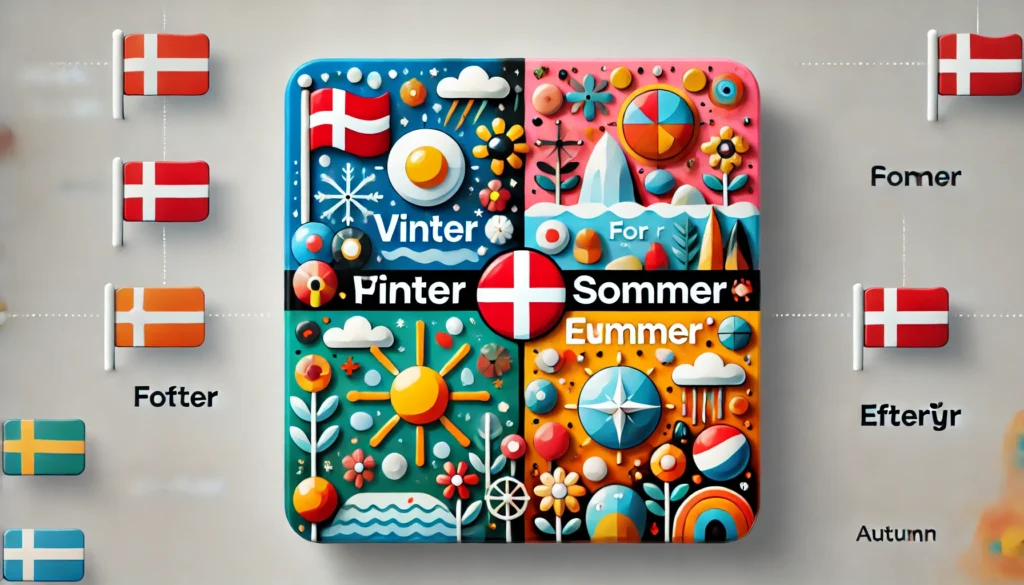Seasons in Danish
Learning about seasons in Danish is not only a fun way to expand your vocabulary, but it also helps you understand Danish culture and daily life. Whether you are planning a trip to Denmark or simply want to learn a new language, mastering the seasons in Danish is a great starting point.
Why is it important to learn about seasons in Danish?
Understanding the seasons in Danish allows you to engage in conversations with native speakers about weather, activities, and traditions that are specific to each season. It also helps you comprehend Danish media, literature, and even navigate through Danish websites more effectively.
Moreover, learning about seasons in Danish enhances your language skills by introducing new vocabulary related to weather conditions, holidays, and seasonal activities. This knowledge not only helps you communicate better in Danish but also boosts your overall language proficiency.
How to learn about seasons in Danish?
To make learning about seasons in Danish easier and more enjoyable, consider the following methods:
- Flashcards: Create flashcards with Danish season names on one side and their English translations on the other. Quiz yourself regularly to reinforce your memory.
- Language apps: Use language learning apps like Duolingo or Babbel, which offer interactive lessons on seasons and provide pronunciation practice.
- Watch Danish media: Watch Danish movies, TV shows, or listen to Danish songs that mention seasons. This exposure will help you understand how seasons are discussed in everyday conversations.
- Practice speaking: Engage in language exchange with native Danish speakers or practice speaking about seasons in Danish with a language partner or tutor.
Examples of seasons in Danish:
Here are the four seasons in Danish along with their English translations:
- Vinter (Winter)
- Forår (Spring)
- Sommer (Summer)
- Efterår (Autumn/Fall)
By familiarizing yourself with these season names in Danish, you can start incorporating them into your daily language practice and conversations.
Learning about seasons in Danish is not only educational but also a gateway to understanding Danish culture and language on a deeper level. So, grab your language materials, explore the seasons, and immerse yourself in the beauty of the Danish language!

Forår(Spring)

Sommer(Summer)

Efterår(Autumn)

Vinter(Winter)

